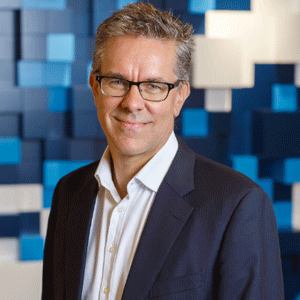THANK YOU FOR SUBSCRIBING

Accelerating Blockchain with Interconnection
Clement Goh, Managing Director, Equinix South Asia


Clement Goh, Managing Director, Equinix South Asia
On the back of Singapore’s efforts to become a Smart Nation, blockchain events such as BlockShow Asia 2017will be held in Singapore on 29 November 2017 and is set to lay the foundation to build a vibrant blockchain ecosystem across Asia and global markets. Despite the technology being at a relatively early stage, there is significant growth of blockchain-related technologies in the country, with Hong Kong and Singapore’s central banks signing a FinTech deal to collaborate on a number of projects which allow cross-border trade and financing.
Today, along with the ubiquitous Bitcoin, there are nearly 700 other crypto-currencies trading on the market. These are being employed for everything from smart contracts to proof of ownership, voting system, and a myriad other decentralized use cases.
The rise of Blockchain
To ensure the legitimacy and security of each transaction using distributed ledger technology (DLT), a shared public ledger, or transaction record called the “blockchain,” is kept. Blockchain records and verifies all transactions across a public network of distributed participants in a chain that is open and visible to all.
This may sound like a risky proposition, but it’s worth it. Goldman Sachs estimates the potential cost savings to the financial services industry through blockchain technology could be worth as much as $12 billion a year globally.
Interest in blockchain is soaring all over the world, especially in Asia. For example, the professional services firm, Deloitte , has just launched a new Asia-Pacific blockchain lab in Hong Kong to help clients in the region adopt distributed ledger technology. According to the firm, the lab will be used to conduct client workshops, develop prototype services, provide production support and deliver innovative ideas for deployed blockchain networks in the financial services industry.
A growing network of blockchain nodes and emerging cryptocurrencies are also acting as catalysts for the increase in the banking and insurance industry’s demand for Interconnection. Based on the findings of Global Interconnection Index, a recent market study published by Equinix, banking and insurance companies in Asia-Pacific are expected to see a surge in demand for Interconnection bandwidth capacity, anticipated to grow at an average of 71 per cent per year to 2020, and account for 13 per cent of the total Interconnection bandwidth in the region.
Blockchain records and verifies all transactions across a public network of distributed participants in a chain that is open and visible to all
Scalability is key
As brilliant as the idea of creating a decentralized cryptocurrency using blockchains undoubtedly is, it also creates scalability issues that impact throughput and cost. Scalability limits include constraints on the number of transactions per second and the amount of data that can be processed through the system. However, the compute power to validate each transaction progressively costs more in real money.
Some major banks and cloud service providers (CSPs) have launched initiatives to overcome such scalability hurdles and harness the potential of blockchain technology. These mainly involve creating secure and scalable private blockchain environments.
Take the R3/Microsoft Azure Partnership. This worldwide consortium of over 40 banks is working to design and apply distributed ledger technologies to global financial markets. The R3 banks will have open access to Microsoft Azure and 45 cloud-based tools on the Azure platform, as well as dedicated Microsoft staff and resources to, as R3’s CEO David Rutter puts it, “scale the use of distributed ledger technology in a way that will change the entire financial services industry.”
There is also the partnership between Amazon Web Services (AWS) and the Digital Currency Group (DCG)to offer a cloud-based blockchain experimentation environment for enterprises. Based in one of the world’s most important financial services hubs, New York City, DCG is already one of the biggest investors in blockchain firms. By providing such a service, its own portfolio of over 70 blockchain providers across more than 20 countries can work in a secure and scalable cloud environment.
An interconnected financial services and cloud ecosystem could be the answer
The advantages of blockchain are tremendous. It provides essential financial transaction services more efficiently and securely, and at less cost than current tools. As well as, it enables digital transfer of money without high risks of falsification and it can reduce the time required to settle financial transactions from days to minutes.
However, to turn this potential into a cost-effective and revenue-generating reality, global financial services companies and CSPs need an open and secure colocation and interconnection platform to produce cloud-based blockchain services can be developed, tested and deployed. That platform must include a secure and scalable Interconnection Oriented Architecture™ that enables direct and private access to multiple cloud providers, a choice of peering networks and a growing ecosystem of financial institutions.
Blockchain is a decentralized, but interconnected technology—anything that happens in a blockchain network happens to the network as a whole. In other words it is a more distributed rather than a centralized process. An IOA framework shifts IT infrastructures away from centralized to a distributed approach that increases proximity to all the elements needed to complete the highest-performing digital wallet transactions possible. With Interconnection Bandwidth capacity growth increasingly critical banking and insurance firms, an IOA can enable them to maximize their ability to leverage performance, scalability and security when performing critical data exchanges such as blockchain.
With an increasing number of organizations betting on blockchain, Interconnection has a key role to play in providing the scalability, security and speed needed for all parties to collaborate. We will all be living in a cashless world very soon.
Weekly Brief
I agree We use cookies on this website to enhance your user experience. By clicking any link on this page you are giving your consent for us to set cookies. More info
Read Also













